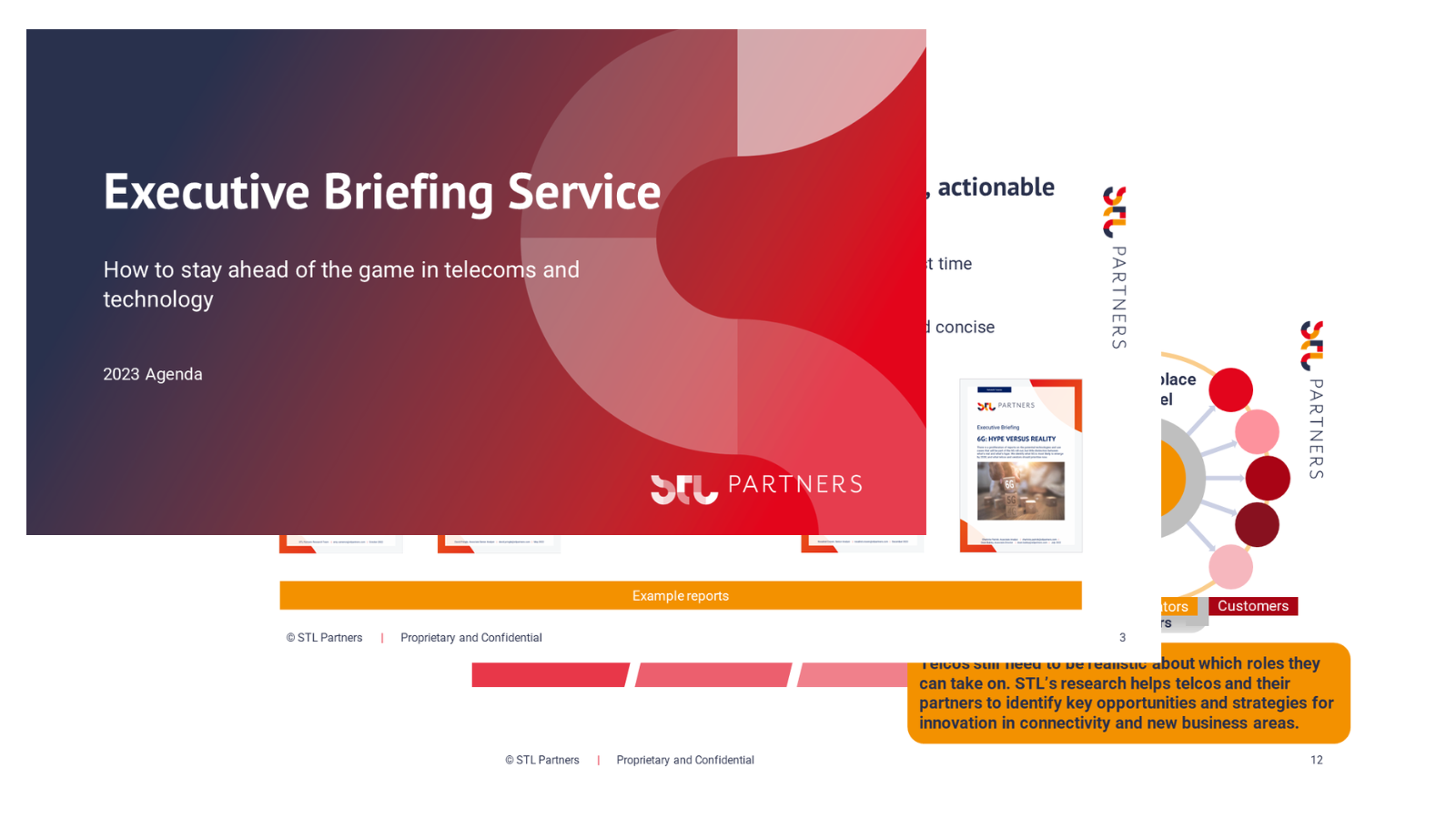
Challenges of IoT Business Models
Challenges of IoT business models are increasingly evident, yet the need to make the world run better using connected technologies like 5G and automation (which we call the Coordination Age) is also increasingly clear. What is going on?
For example, Ericsson recently agreed to sell its IoT Accelerator and Connected Vehicle Cloud businesses to the IoT specialist Aeris Communications. The vendor explained that it decided to sell its IoT business because it is a key driver of losses in the Business Area Technologies and New Business.
Ericsson is not the first major player to exit an IoT Platform – for example Google announced in August 2022 that it would be shutting down its IoT Core Platform, and there is speculation that others (e.g. AWS) may also be eyeing exits.
Moreover, as outlined in our report Why the consumer IoT is stuck in the slow lane, for telcos IoT still only accounts for a low single digit percentage of their overall revenue and there has been relatively low demand for IoT solutions in the consumer market.
Given that STL Partners extols the Coordination Age – the concept of using connected technologies to make better use of resources, why are such major players struggling to make the concept of the Internet of Things work? This article looks at some of the challenges and is based in part on our conversation with Rob Tiffany, a long-time IoT practitioner and friend of STL.
IoT Business Models: show me the money!
One of the governing reasons for this is that the economic models for some IoT solutions can be very challenging, and for many enterprises, the solutions provided by some major IT players are unaffordable. Success often requires solutions with:
- very low incremental costs ($0.01 / asset / month)
- to connect diverse assets (e.g. a pallet, a beer barrel, a sensor in the ground)
- often in varying or challenging environments (e.g. on the road, in a field, etc.)
- that may or often may not require constant connection
- that either save or add small slices of value, or create value that appears only when something significant is enabled or prevented (e.g. a loss is avoided)
- that may require information exchange with multiple business partners (e.g. warehouses, distributors, weather information providers, etc.).
Developing and implementing IoT solutions can be costly, both in terms of upfront investment and the ongoing costs of maintaining and updating the solutions. This is a significant barrier for some companies, particularly smaller ones with less to invest in IoT projects. In many instances, the cost to benefit ratio is only worth it if the incremental costs are very low. This is not always possible with the solutions that traditional IT or technology suppliers develop.
Complexity: keeping IoT simple is harder than it sounds
The IoT business model typically involves the integration of multiple technologies and domains, including hardware devices, networks, edge computing, clouds, and analytics. It can require a wide range of skills that are difficult to find with a single engineer.
In contrast, in some other domains, a single developer could create a market-changing app during the smartphone revolution, for example.
Creating IoT solutions can require:
- Devices expertise, calling on hardware designers, engineers, and embedded software developers.
- Network expertise in both short and long-range technologies like Bluetooth, Wi-Fi, Ethernet, and cellular.
- The edge computing skills required for creating an IoT solution involves hardware, software, small-footprint analytics, containers, and edge node orchestration.
- IoT platforms often run in the cloud and manage the identity, security, and bi-directional routing of data to and from devices and other destinations.
- Data storage, streaming analytics, databases, and machine learning add to the diversity of skills required to build complete IoT solutions.
This complexity often means that consultants and systems integrators are required to string all the different parts together. This adds in extra difficulty and costs.
IoT security is a whole new ball game
The security of the Internet of Things (IoT) is a major focus, as the large number of connected devices has created what some like to call “the largest attack surface in the history of computing”.
In the past, security professionals primarily focused on personal access to laptops, servers, and desktop computers under corporate control. The proliferation of billions of personal devices with the smartphone revolution, along with the use of bring your own device (BYOD) and app stores, has made even this security situation more complex, and there are now also many more connected IoT devices than smartphones, many with no security measures in place.
This has resulted in global-scale attacks like the Mirai botnet, which took down parts of the Internet and even caused an entire country to go offline. The combination of unencrypted data in transit and at rest has made the IoT a risk that some corporate decision makers are unwilling to take.
Unexpected costs of scaling the IoT
As previously touched upon, the costs of building and deploying IoT solutions can be high. When considering the price of devices, sensors, networks, platforms, analytics, and support at scale these costs can be significant. Even for solutions that seemed feasible during the proof-of-concept phase.
“Low-cost” microcontrollers can become expensive as sensors, storage, and networking capabilities are added. While indoor solutions can use existing Wi-Fi and Ethernet networks, outdoor solutions may require more expensive cellular networks and data plans.
The usage-based pricing of cloud-based IoT platforms for data movement, storage, and analytics can also increase costs. In addition, supply chain constraints and chip shortages have impacted the availability and cost of IoT devices and sensors.
Choosing the right IoT Network(s) is not straightforward
Choosing an inappropriate network when building an IoT solution can result in bandwidth constraints and an inability to scale. When starting an IoT project, developers often follow the easiest path to accomplish their tasks. If it is an indoor solution, developers may use familiar Wi-Fi or Ethernet devices and networks due to their simplicity.
However, if the solution needs to be extended outdoors or beyond the range of the LAN or WLAN, the network choices may need to be reconsidered and existing devices replaced. Similarly, a fixed outdoor solution may be designed with LoRa or NB-IoT, only to later realize that the mobility and roaming of cellular is necessary. Using a narrowband solution that can only transmit small amounts of data may not be sufficient if pictures and video also need to be transmitted, requiring the replacement of devices and the implementation of new networks.
How to make the IoT business model work?
Despite the challenges, effective models do exist. In Rob Tiffany’s opinion, one of the key factors is to address a specific business problem rather than generic classes of problems.
An effective example of such an IoT solution is the Australian company Konvoy Group. Konvoy began as a keg rental business for craft brewery in 2019. Recently, it expanded its services with an IoT solution. Its tracking solution, which uses Sigfox and cellular technology, has helped the company enter new markets and rapidly expand in Australia and New Zealand.
The tracking systems helps Konvoy recover lost kegs and achieve an average of one extra fill per keg per year. This increase in usage can translate to significant cost savings for brewers, as they no longer need to invest in recovering lost kegs and can instead focus on sales and marketing. The tracking system also enables Konvoy to offer predictive maintenance, as well as a subscription service for independent breweries.
What makes this a notable use case considering the issues that have been raised surrounding IoT, is that Konvoy’s solution employs lightweight, minimal, agile tech that is very low cost. Compared to some other IoT solutions, Konvoy’s solution records less information and has a much shorter battery life. Yet, the trade-off for breweries is well worth it, as the service is affordable and Konvoy’s tracking system only collects specific data that actively contributes to creating savings. This service demonstrates the value, and even the need, for similar IoT solutions. The key to greater IoT adoption and investment then, lies in designing solutions that are simple and affordable. IoT solutions can enable dramatically improved outcomes to business process and generate value, but a different approach is needed to increase adoption.
The IoT’s is not dead…
While some of the IT players are finding it hard to create solutions that scale in the ways they originally envisaged, the desire to connect assets is getting ever stronger and many enterprises are evolving solutions.
Rob Tiffany, the long-time IoT veteran remains positive and is working on an IoT solution to help companies improve their sustainability. Tiffany says “it may turn out that the best use case for IoT is to save the planet”.
… it is changing into something new
Its also interesting to note that STL Partners is seeing strong demand for Edge Computing and Private Networks. Both provide models with enhanced links between computing and connectivity in an IoT like environment (i.e. machines, people and processes are being connected).
But aside from some of the earliest network slicing models, many of the desired use cases are about ensuring that robust connectivity and high-powered compute are delivered in a relatively local and confined context such as an industrial plant or campus. The customers in these instances typically require security and reliability (or availability) for relatively concentrated and valuable processes as opposed to the dispersed value typical to many IoT use cases.
It may be that exploiting the limits of these concentrated environments is a logical precursor to the further development of more widespread connected applications. Solving the challenges near the hubs of enterprise ecosystems may make it easier to solve those that are more widely distributed – and which have previously been more typically described as ‘IoT’.
Download this article as a PDF
Read more about telecoms strategy
Executive Briefing Service overview pack
Our overview pack summarises the key agenda for CxOs and those driving growth in telecoms and technology
Navigating digital identity: understanding what it is and its importance for telcos
Digital identity solutions constitute a promising revenue stream for telcos, yet few have been able to fully capitalise on this opportunity. So why did the coordination between SK Telecom, KT, and LG Uplus prove so successful?
Lessons in telecom strategy from Elisa
Elisa’s distinctive telecom strategy and leadership practices continue to drive positive outcomes for the business. In this article, we look at how they are helping Elisa to respond to sustainability challenges and opportunities.
From Telco to Techco
What does it mean to change from a telco to a techco? Impacts on business model, operational model, propositions, and culture.






